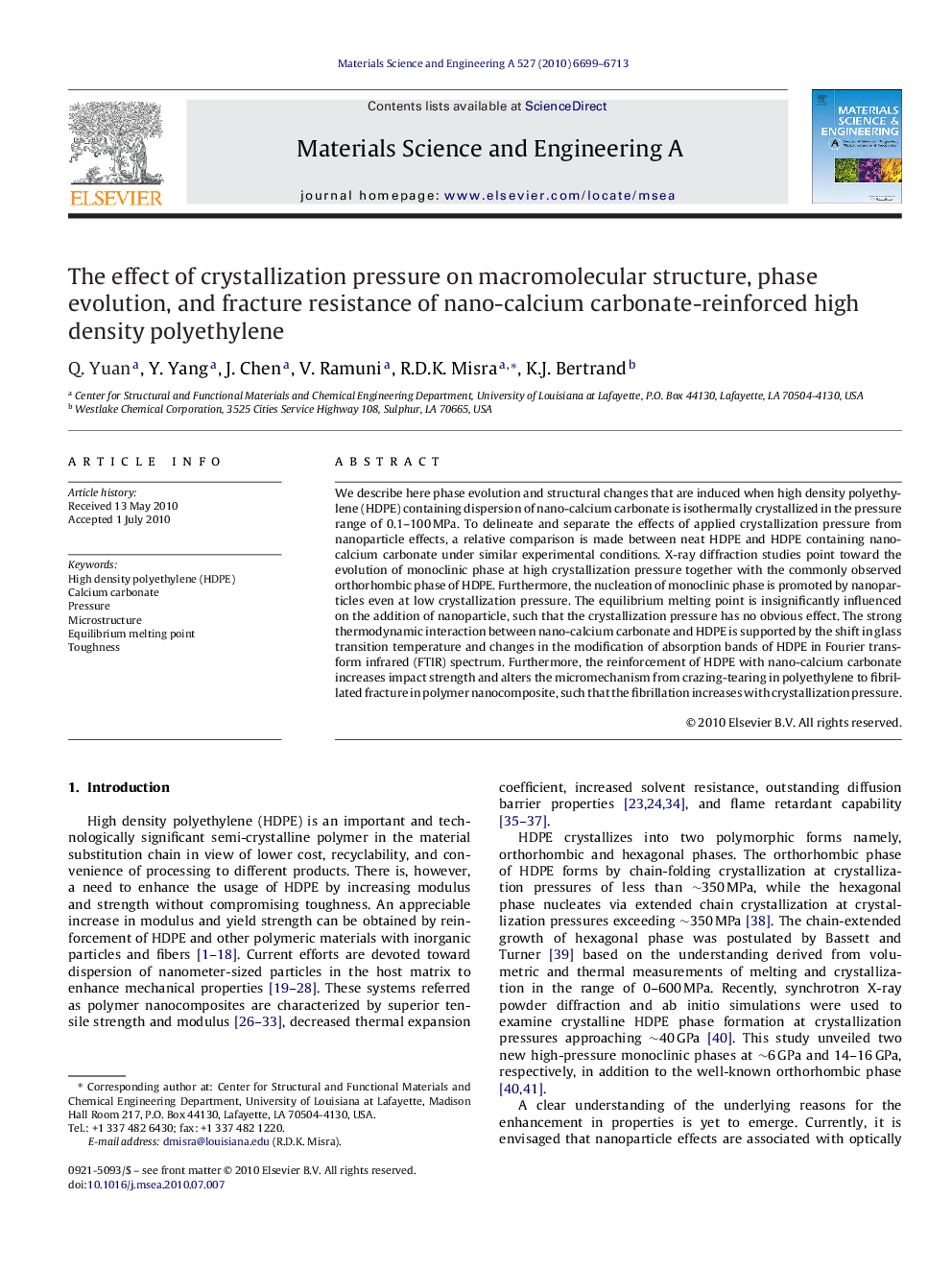| Article ID | Journal | Published Year | Pages | File Type |
|---|---|---|---|---|
| 1580166 | Materials Science and Engineering: A | 2010 | 15 Pages |
Abstract
We describe here phase evolution and structural changes that are induced when high density polyethylene (HDPE) containing dispersion of nano-calcium carbonate is isothermally crystallized in the pressure range of 0.1-100Â MPa. To delineate and separate the effects of applied crystallization pressure from nanoparticle effects, a relative comparison is made between neat HDPE and HDPE containing nano-calcium carbonate under similar experimental conditions. X-ray diffraction studies point toward the evolution of monoclinic phase at high crystallization pressure together with the commonly observed orthorhombic phase of HDPE. Furthermore, the nucleation of monoclinic phase is promoted by nanoparticles even at low crystallization pressure. The equilibrium melting point is insignificantly influenced on the addition of nanoparticle, such that the crystallization pressure has no obvious effect. The strong thermodynamic interaction between nano-calcium carbonate and HDPE is supported by the shift in glass transition temperature and changes in the modification of absorption bands of HDPE in Fourier transform infrared (FTIR) spectrum. Furthermore, the reinforcement of HDPE with nano-calcium carbonate increases impact strength and alters the micromechanism from crazing-tearing in polyethylene to fibrillated fracture in polymer nanocomposite, such that the fibrillation increases with crystallization pressure.
Keywords
Related Topics
Physical Sciences and Engineering
Materials Science
Materials Science (General)
Authors
Q. Yuan, Y. Yang, J. Chen, V. Ramuni, R.D.K. Misra, K.J. Bertrand,
